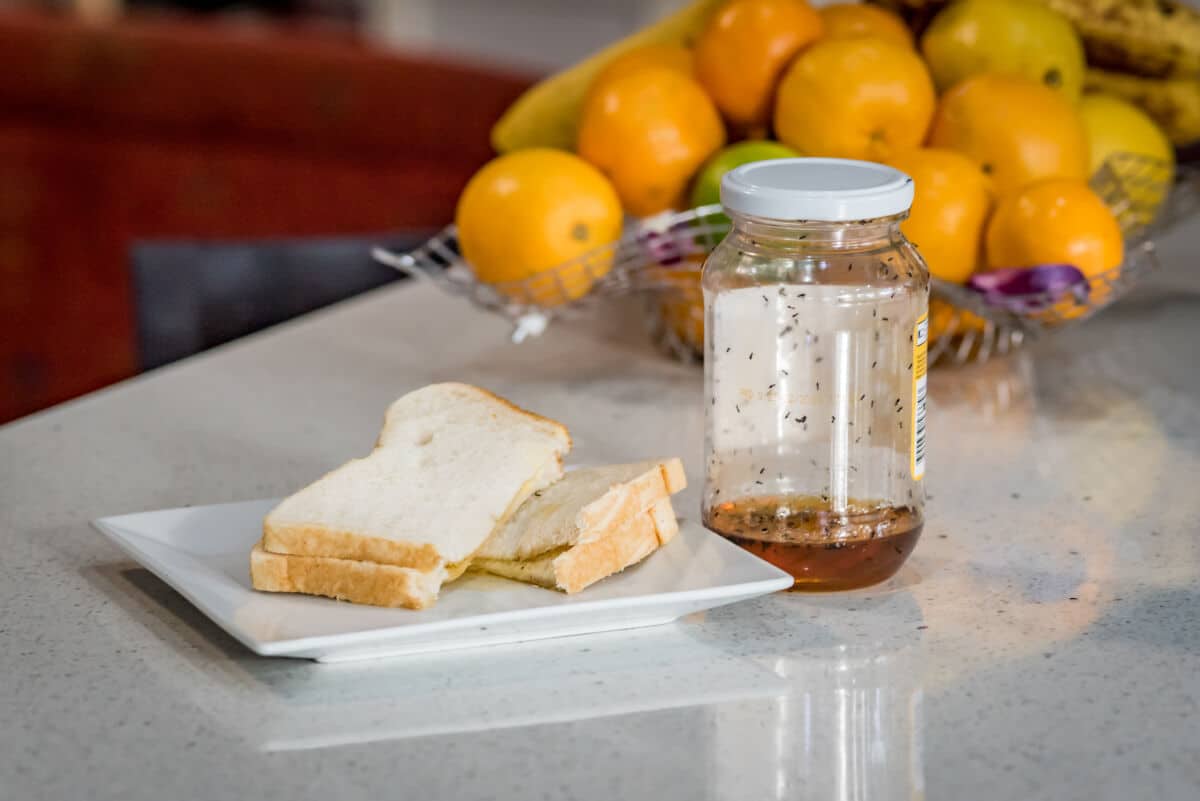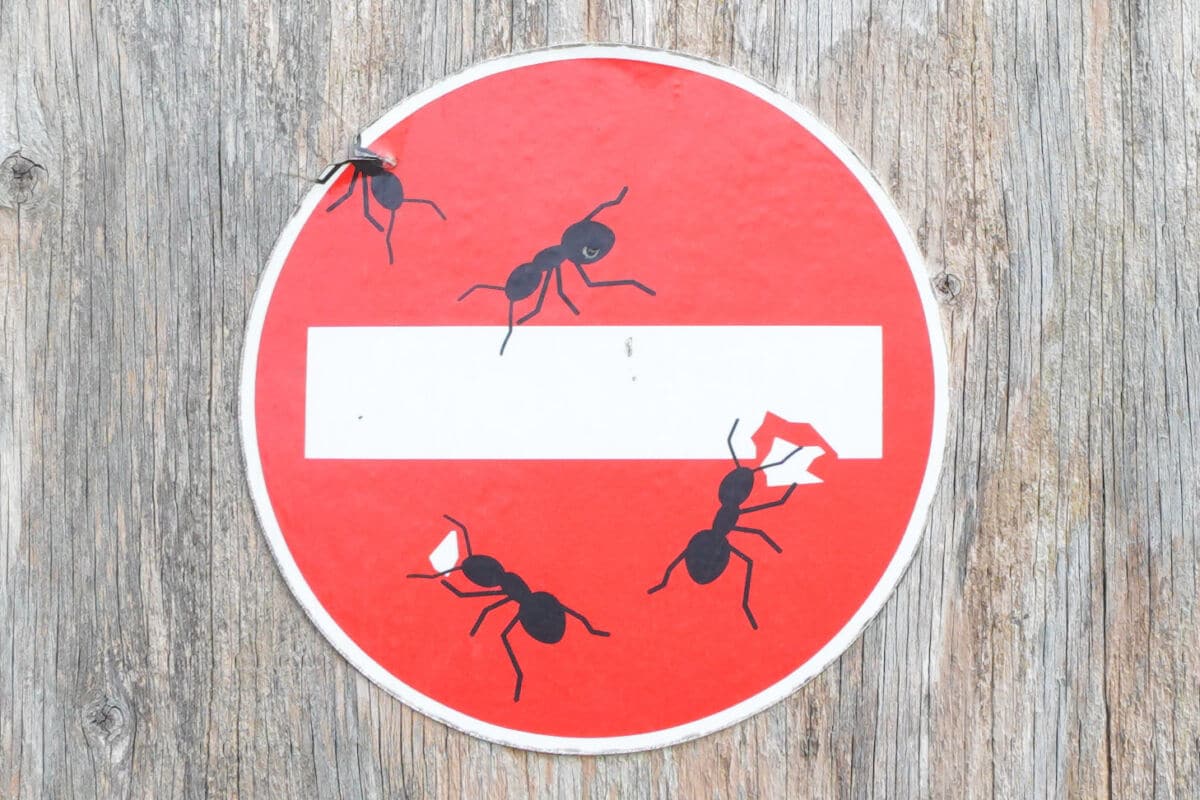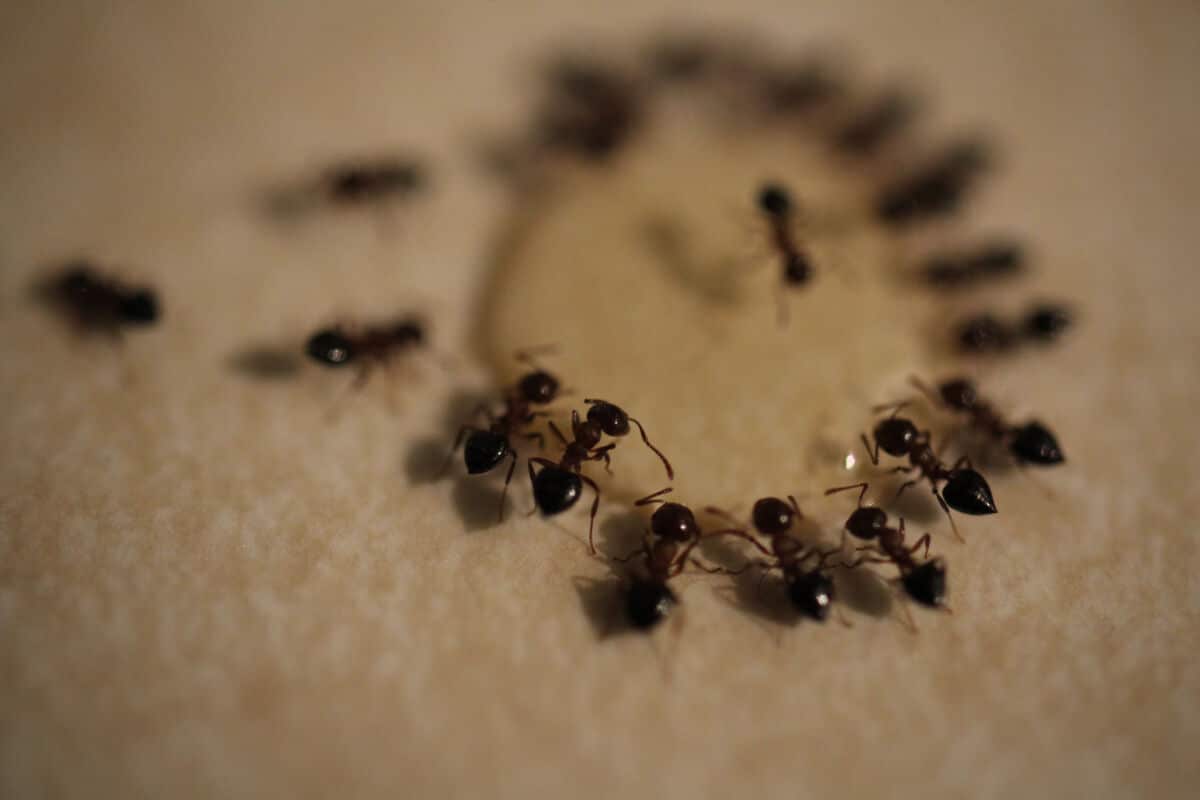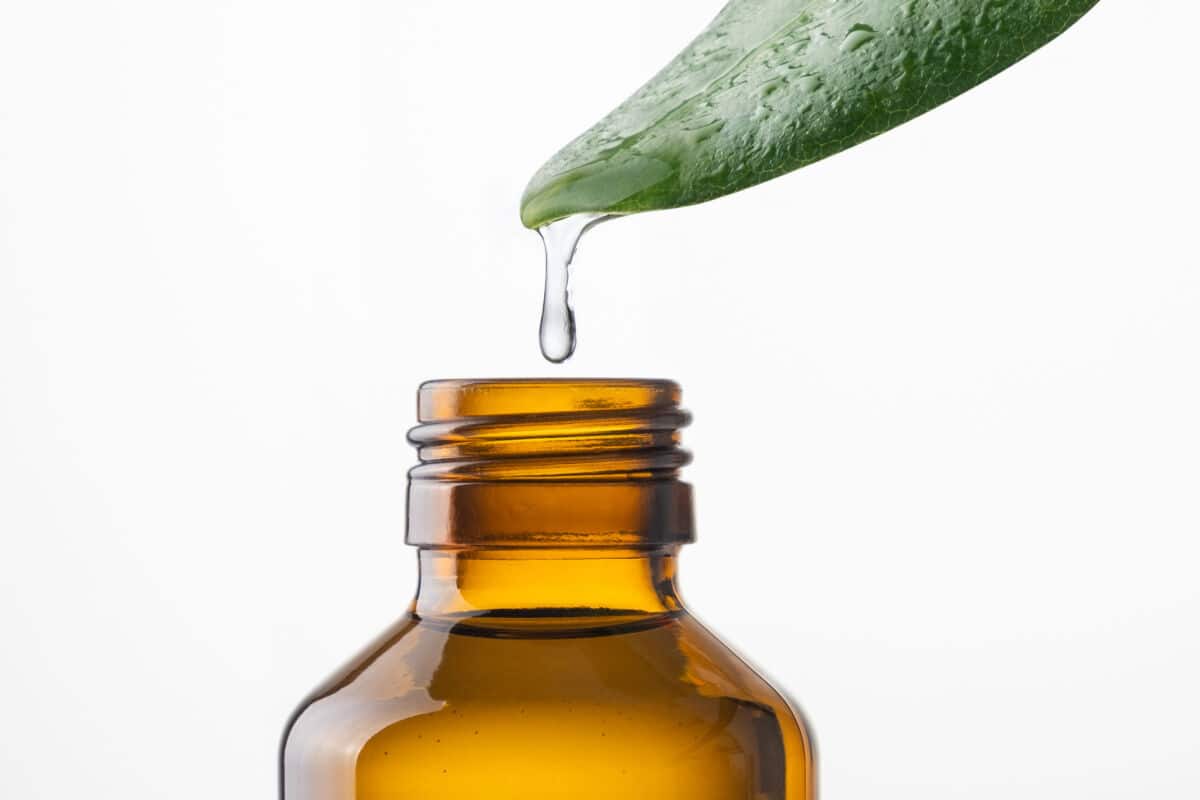How to Get Rid of Ants in the Kitchen
This is a complete guide to getting rid of ants in your kitchen. Learn why they are there, how they get it, how to get rid of them, and how to prevent them from coming back.

We all learned that awesome (but useless) lesson at school – ants are super strength little critters that can carry 50 times their body weight.
But did you know that they are an integral part of mother nature’s cleaning crew?
Thing is, while their help might benefit the outside ecosystem, their support is less than wanted inside. Especially in our kitchens!
For most of us, it is our inner sanctum where we hang, cook, and socialize. The average family spends up to 75% of their waking hours in the kitchen. So, the last thing we want is these ugly little critters crawling all over our freshly made mac’n’cheese just before the family digs in.
If this sounds like your life right now, then you’re in the right place. We’re about to lay it down for you by telling you why they’re in your kitchen, what they’re looking for, and of course, how you can get rid of them.
Plus, we’ll give you tips on the best way to keep ’em gone. So, pay attention, this is important!
Why are There Ants in Your Kitchen?

In short, they are hungry and thirsty. And because they are social animals, living in colonies where they all work for the greater good, thousands will follow once one finds their way in.
Being the masters of foraging, they are well-versed in finding food and leading the other workers straight to it. First, the scout goes out looking for a food source, leaving a pheromone ‘crumb trail’ as he goes.
Then when he finds your peanut butter jelly sammich, he takes some back to the other blue-collar workers and tells them where to find it. That’s when you get the cavalcade of workers in unison traipsing through the house.
Their job is to keep coming back until the food supply is exhausted. Which, let’s face it, is unlikely to happen in a house full of hungry humans. So they will keep coming back.
Ants also look for water sources, so even if your house is food-debris free, they will still smell and search for open water sources. Standing water in sinks, shower trays, and tubs is a good starting point for them.
Or even kettles, vases of flowers, and small droplets from a leaky pipe or faucet will be enough to attract them.
What Types of Ants Typically Invade Kitchens?

Small black ants, or odorous house ants, are the most common ants people encounter in their homes, followed by the sugar ant. You’ll know if it is an odorous ant because they smell of rotten coconut when you squish them.
Large groups of odorous ants that congregate can give off an earthy smell. They typically enter the home in search of water and sugary foods, like the sugar ant. Their colonies, however, are typically established outside.
To identify odorous ants, take a closer look. They will be as small as 2 to 5mm in length, hairless, and dark brown to blue-black in color. But it’s the distinct smell that gives them away as odorous.
Sugar ants can be difficult to differentiate from odorous ants as they are also small and dark in color. Plus, they are both attracted to sweet stuff in the kitchen. The key difference is that sugar ants are more nocturnal, and most active at dusk and through the night.
The ant you really need to look out for in the home is the one you won’t miss due to its size. The carpenter ant is 6 to 12mm in length. It is the largest ant species that you are likely to encounter in the home.
Carpenter ants have the most potential to cause damage. Their namesake gives the game away. They like to carve wood and create nests in damp softwood. This is why basements, bathrooms, and anywhere with running water and leaking potential are likely to house them.
Left unchecked, they can compromise a house’s structure and cause thousands of dollars’ worth of damage.
Getting Rid of Ants in Your Kitchen

Here are the most common answers for how to get rid of ants in the kitchen.
There are a few ways and methods thrown around in discussions and how to guides, but these are the most effective.
Find the Entry Points – Concentrate Here
To eradicate ants from the home, you must locate their entry points, the nest, and of course, their foraging routes. There is only one surefire way to do this: make a brew, and then watch them for a while. Making a note of where they come from and where they go.
You will often find that they enter the house via cracks or holes in the house’s exterior walls. This is a good sign for two reasons. One, the nest is likely to be outside, and two, if there is a hole or crack, it can be sealed.
Try to Find the Nest – and Destroy it
As mentioned, the best way to find the colony is to follow the ants back to it. However, their route is often zig-zagged all over the place. This is the haphazard route they take when following the scent of food.
The workers will also go the long way to the food as they follow the scout’s pheromone trail. With this in mind, you will only find them on the return journey if they have found food. So, rather than wait for them to see the food, provide it directly.
Make up some starchy bread or biscuits with jam or peanut butter. That way, whether they are looking for sugar or protein, you’ve got them covered. You don’t have to know exactly where the nest is to destroy it.
Most ant species like to live outside, and for this reason, you will most likely follow them to your yard. Once you have a good idea of the colony location, you can choose your weapon of choice and set about destroying the nest.
To do this, you need to kill the queen ant. Once she dies, the reproduction cycle stops, and the ants will move elsewhere.
Use Ant Baits / Ant Killers
Once you know where the nest is likely to be, you can use a two-prong attack. The first and most important step is to use good bait. This will be a slow-release poison that is disguised as food.
The workers will find it and take it back to the colony and feed it to both the queen and her larvae. Being slow release gives the ants a chance to eat it and travel back to the settlement before it takes effect and kills all who have consumed it.
The second prong can be an instant ant killer such as a powder or spray. These types of ant killers are best for the stragglers that are in unwanted places. That way, you can kill instantly and not have to wait for them to succumb to the poison.
Baits can take 24 to 72 hours to take effect. Powders and sprays are usually formulated to be an instant kill.
If you have children or pests that make you mindful of using harsh chemicals, you can choose to use one of the many available natural remedies. Essential oils can both kill and repel. Scents such as cedarwood oil and geraniol are effective on both counts.
Seal any Cracks and Entrance Points
Once your initialattack has repelled the ants from your castle, you can look to keep them out by sealing up any access points they might be using. These can be minuscule for ants, so pay attention to cracks and holes that have been drilled for cables.
Openings such as air vents, heating ducts, and chimney breasts will need a repellant as they cannot be sealed shut. Strongly scented aromatics such as bay leaves, mint, or citrus fruits can be placed to deter the ants from entering.
Overpowering aromas will send their scent receptors into overdrive, meaning they cannot smell food or the pheromone trails left by other ants. As such, they will head off in the opposite direction.
Shrubs, tree branches, and anything else leaning against the property must be removed or cut back around the perimeter of your property. This removes the bridges that ants use to get into the property.
Decorators caulk and weatherproof sealant are all you need to make your hose fairly ant proof. Throw in some essential oils or a few herbs and spices for good luck, and your home will be the last place ants will want to enter.
The Best Ant Baits and Killers

We touched on baits and ant killers before. Many products claim to kill ants and make your home pest free, but some applications are better than others.
Once you decide on the approach you want to take, such as pesticidal versus natural, you can narrow down the better products available in that category according to your needs.
There is a huge choice with chemical pesticides, making the pest control section of your local hardware store somewhat overwhelming, especially if you don’t know what most of them do.
To assist, we have a guide dedicated to the best and most effective ant killers. But here are the most common types and what they are designed to do.
Gel Baits
Gel baits are typically added to ant traps and are designed to mimic natural ant foods such as sweet nectar. Like the honeydew ants hanker for from aphids.
Both sticky and sweet, it will attract most types of ant when on the hunt for sugar-based food sources.
Like any bait, these gels will contain a slow-acting poison to kill the ants when they eat it and share it. They come in many different guises, such as traps, syringe style applicators, and even squeezy bottles.
In essence, they all do the same thing. The difference is where you can apply them. A trap or station can be laid on a flat surface without a mess. A sticky gel can be used on vertical surfaces and directly into cracks that ants travel along.
What you choose will depend on where your ant problem is most prevalent.
Granular Bait
Granular bait essentially does the same thing as a gel or bait. It fools ants into eating it and poisoning themselves.
Some ants are more prone to collect an abundance of granules like they would food crumbs. They can then carry these back to the colony to hand out, which will kill their colleagues and queen.
Many people prefer a granular bait over a sticky gel bait as it is less messy and can be swept up once the ants are gone. In contrast, a sticky bait will need wiping and mopping. Gel baits can also stain walls and furniture if placed in the wrong areas.
Instant Killer Sprays and Powders
Ant sprays and powders are often the first things people think of when it comes to an ant attack. Readily available in almost every type of store, they are cheap and easy to use. You spray the ants you see or dust the area where they are walking.
They can give instant relief if you have ants in places you don’t want them in, such as your kitchen or bathroom. Formulated to be kill-on-contact, they will slow the imposing hoards as they navigate your home.
They are unlikely to solve your problem, though, as they do not act to kill the colony. As such, the ants are likely to return very quickly.
Boric Acid, Boiling Water and Other Home Remedies

There are plenty of ‘home remedies’ and natural ways to get rid of ants, and others still that try to ‘repel’ them. Some of them include:
- Diatomaceous earth
- Borax, or boric acid, mixed with sweet things like sugar, maple syrup etc.
- Peppermint oil
- Vinegar and water
- Lemon peels
- …many more besides
Some of these can be highly effective, many of them aren’t effective at all.
For a good discussion of natural products that can be used to get rid of ants, please see our companion guide that goes into quite some detail: How to get rid of ants, including many natural remedies.
How to Prevent Them Coming Back
The rule of thumb to prevent ants from entering your home is to keep it clean. After all, it’s much easier to stop them from coming in than it is to evict them once they have made themselves comfy.
As we said before and we will say many times, ants are attracted to easily found and foraged food, along with open water sources. Remove these from the home, and half the battle is done.
Common things that attract ants are dirty dishes in the sink and pet food in bowls on the floor. As well as food residue such as smears, splatters, and crumbs left all over the place. If you clean as you go, it reduces the ant attractants massively.
When it comes to cupboards, be sure to keep things like pasta, rice, and dry foodstuffs in airtight containers that do not give off a scent that the ants can pick up on.
Wiping and drying any sitting water on surfaces and in sinks is also good practice. If you give your plughole a dash of vinegar or baking powder too, it will neutralize pungent odors that the ants like. This will stop the smell from drain pipes that encourage the ants to head indoors.
Finally, when the inside is ant-treat free, prepare the outside to keep them at bay. The application of a good ant barrier treatment around the house’s perimeter will keep them out, along with many other insects as a bonus.
Conclusion
Well, there you have it, our all-encompassing guide to getting rid of your six-legged day-trippers.
Whether you choose natural or chemical, it pays to have a thought-out plan of attack. And prevention is always better than cure.
So, follow our tips and recommendations, and you should be ant-free for the foreseeable. And at the risk of sounding like a broken record, don’t wait until they move in to tackle them. Keep your castle clean and tidy, and use preventative measures to keep them at bay.
What’s your go-to ant treatment or repellant? Do you have a favorite method that we haven’t covered? If so, let us know in the comments, and we’ll see you there.
Happy hunting!
Share this post
Save time and money on pest control
Subscribe to expert DIY pest control tips, pest control product reviews and information.




